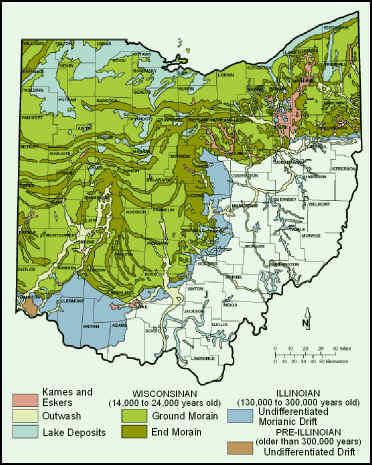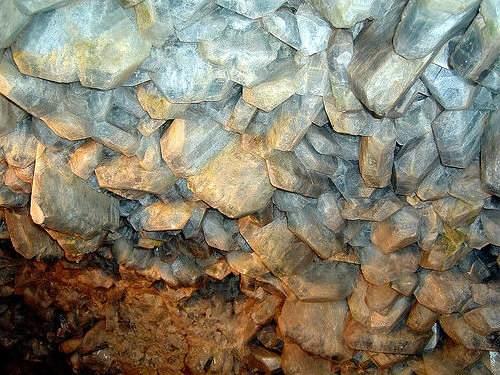Caves are wonderful creations of nature that manage to incorporate the magic of discovery and the horror of claustrophobia. Although caves are typically associated with cavities in soil rather than ice, the areas that are covered in the latter may also contain caverns as the phenomenon of ice caves in Cincinnati, OH shows. A recent visit that I paid to the Ohio Museum of Natural History and Science has shown that the properties of the local caverns can be simulated in the museum environment and that the model in question can be used to display the key processes occurring in the specified environment, therefore, creating premises for the analysis of the designated area and creating forecasts regarding the further changes in the specified caverns.
The phenomenon of an ice cave is typically defined as the tunnels in the upper layer of the ground that lies on the glacier bed. Glaciers, in their turn, can be viewed as the environment, in which ice caverns can be formed. In other words, glaciers serve as the foundation for the development of the cave. The conditions that the Cincinnati environment offers can be deemed as rather favorable for the development of ice caverns. A closer look at the location of Ohio, in general, and Cincinnati, in particular, will reveal that most of the area under analysis is glaciated, i.e., located over a layer of glaciers. As Fig. 1 shows, the environment of Ohio has created premises for the development of caverns in the ice deposits.

Therefore, the specified area was predisposed to the creation of ice caverns. The trip to the museum and the visit of the cave has shown that the tunnels separate the glacial ice and the bedrock lying beneath. One must give the museum members credit for creating the environment that allows for a thorough and in-depth exploration of the phenomenon of Ohio caverns. For instance, the fact that the caves were created owing to the development of karst in the specified area should be brought up as one of the essential pieces of information regarding the Ohio ice caves.
In addition, the exploration of the cave allowed understanding the composition and structure of the ice caverns. Particularly, it became obvious that the Ohio cave system is represented by two key types of caves. First and most obvious, the famous ice caves deserve to be mentioned. Composed primarily of water, the designated type of caverns, however, was underrepresented in the museum. The reasons for the specified issue to occur are quite obvious; replicating the caverns made of frozen water is a rather complicated task.
The caverns that the museum actually had to offer were composed of limestone. The specified type of caves is not related to the glacier that the Ohio state partially resides on. Instead, limestone caves exist due to the groundwater movement and the gradual erosion of the soil. Despite the lack of connection to the actual glacier-based caverns, the specified type of caves was represented rather well by the museum owners.
Specifically, the composition of the caves in Ohio was displayed rather accurately in the museum. For instance, the limestone basis of the cave could be easily identified. The specified characteristics of the cave align with the structure of the Ohio caverns, which have a limestone layer at the top of their basis. According to the existing characteristics of the Ohio caverns, the specified feature of the museum caverns cannot be deemed as quite correct. Particularly, the fact that the limestone layer is represented by a large number of stalactites and stalagmites(Fig. 2) should be brought up as one of the key characteristics of the Ohio caves, as demonstrated in the museum.

The caves in the museum, therefore, can be characterized by the limestone coating and the solid bedrock foundation. The temperature in the specified environment is kept at 54° F, which can be deemed as rather close to the natural settings. The humidity rates in the caverns, in their turn, are extremely high, reaching the mark of 90% (“What Awaits You on a Trip to Ohio Caverns?” par. 2). Consequently, it can be assumed that the tour in the limestone tunnels that the museum offered was the exact representation of the Ohio limestone caves environment.
One must admit, though, that visiting the museum and viewing the replicas of the actual caves, though providing new opportunities of exploring the geological structure for the local area, still could not display the essential characteristics of the subject matter fully. As it has been stressed above, the ice caves, which can be deemed the unique characteristics of Ohio, in general, and Cincinnati, in particular, were not included in the museum tour. The geological characteristics thereof, however, are worth taking a closer look at.
The ice caves of Ohio owe their existence to the calcite and aragonite accumulating in the ground and, therefore, creating the pathway for the further development of caves. In other words, the karst landscape of Ohio was created due to soil erosion. Seeing that limestone is rather soluble, the flow of the groundwater in the channels of Ohio soil triggered the development of a branched cave system.
One should note, though, that the trip to the museum did not provide enough information on the phenomenon known as the Ohio crystal caves. The specified type of caves stands in sharp contrast to the limestone caves represented in the museum. Instead of the bedrock foundation and the limestone coating, which the latter can be characterized by, the given cavern type owes its existence to the mineralization processes occurring in the crust of the earth (White and Culver 89). As a result, the specified type of caverns is represented by the unique crystal lining, as shown in Fig. 3 below.

The trip to the museum has shed a lot of light on the geological processes that have been occurring in the Ohio area, in general, and Cincinnati, in particular. For instance, the mechanism of the ice caverns development in ice glaciers finally became obvious to me. In addition, the trip to the museum has shown that the process of caverns formation is not over yet. Although it is finite, it still takes place and is likely to occur for several centuries more.
In other words, the trip to the museum has allowed viewing the history of the Ohio glaciers development and identifying the patterns thereof. The museum allowed a full exploration of the unique environment of the karst landscape of the Ohio caverns. This insightful and unique trip clearly offers a lot of food for thoughts and inspires further study of the subject matter more thoroughly.
Works Cited
Celestite – Coelestin – Celestite – Celestita n. d. Web.
EEES Geology. n. d. Web.
What Awaits You on a Trip to Ohio Caverns? n. d. Web.
White, William B., and David C. Culver. Encyclopedia of Caves. New York City, NY: Academic Press, 2013. Print.